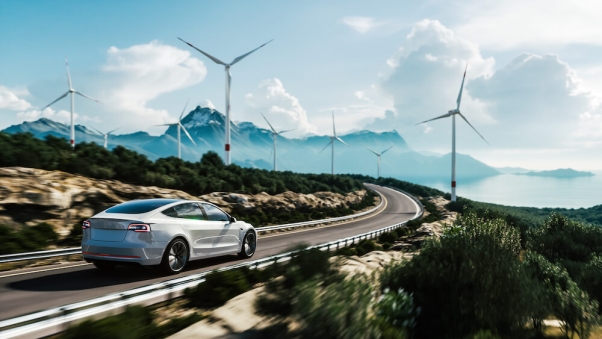Mineworx: Looking beyond electric vehicles
October 28, 2021 -- InvestorsHub NewsWire
-- BY LEON
LOUW

With a
market cap of USD27-million, TSXV listed Mineworx
(TSX.V: MWX) should
be on the radar of all penny stock enthusiasts.
The company has evolved from
being a junior miner to a serious player in the industrial and
cleantech spaces. Mineworx recently developed a proprietary
processing technology to extract platinum and palladium from used
automotive catalytic converters, of which there is currently an
oversupply in the world.
Although for now the company's
focus will be on getting the first commercial plant up and running
in North America in the second quarter of 2022, the growth
potential beyond the USA is frightening.
Mineworx and
Davis Recycling, its JV partner, have just successfully tested a
100L pilot plant, and will ship it to Tennessee in the upper south
of the USA. Their innovative technology ticks all the environmental
boxes and was designed specifically to reduce harmful pollutants
emitted during the extraction process of traditional smelters.
Smelters in America have become increasingly reluctant to take in
spent diesel converters as the world continues its quest to slash
carbon emissions.
An oversupply of catalytic converters
There are about 275 million
vehicles in America, and with stringent emission standards being in
place for more than 10 years, the exhaust systems of 99.9% of them
are fitted with catalytic converters to reduce hydrocarbon and
carbon monoxide emissions. About 80% of the world's platinum and
close to 50% of its palladium, goes into manufacturing these
converters.
Today, platinum is
predominantly used in autocatalysts in diesel vehicles, with
palladium principally in those of gasoline vehicles. However, this
usage is shifting, with substitution of palladium for platinum
occurring due to sustained palladium deficits and the high price of
palladium.
In the USA alone, a staggering
27 million catalytic converters are scrapped annually, and
currently, not even 30% of these spent converters are being
recycled for their platinum and palladium. With the platinum spot
price hovering at about USD900 per ounce and palladium close to
USD2,000, the value of the precious metals extracted from one
catalytic converter is close to USD600.

Phenomenal numbers from a business perspective
This is ground-breaking
technology, and Mineworx is first to the market. The commercial
plant, once in full swing, will produce approximately ten tonnes of
spent converters per day and revenues are expected to exceed
USD100million per plant. These are phenomenal numbers from a
business perspective, considering that the recycling of converters
is currently worth more than USD25-billion.
According to Greg Pendura, CEO
of Mineworx, revenues will start showing on the balance sheet in
the fourth quarter of this year once the pilot plant in Tennessee
gets into the swing of things.
Will the rise of EV's hinder growth?
But is the rapidly growing
Electric Vehicle (EV) market not the end of the road for diesel
converters, and ultimately for Mineworx? Well, not until at least
2050. Although the sale of EVs will soon overtake that of diesel
and petrol cars and trucks, they will be around until at least 2030
– the deadline the US government has put in place to ban the sale
of all new diesel and petrol vehicles. Whether this deadline will
be honoured, remains to be seen.
Plug-in hybrids will still be
on the market until 2035. That means there will be a continuous
supply of spent converters for at least another 10 to 15 years
after the line has been drawn in the sand. But not everybody is
convinced that diesel and petrol will evaporate
overnight.
According to business
information provider IHS Markit (NASDAQ: INFO) commercial vehicles
in the USA will continue to run on diesel fuel for the foreseeable
future.
"66% percent
of new medium and heavy commercial vehicles sold in the U.S. will
still be fuelled by diesel (diesel and diesel-hybrid) in 2040. This
compares to nearly 80% today," the company said.
Diesel is expected to remain
the dominant fuel type globally through 2040 due to increases in
fuel economy which will play a major role in keeping diesel
competitive versus alternative powertrains, the study says. "Range
and load capacity requirements from long-haul, on-highway trucking
will keep diesel relevant in the short- and long-term, while other
propulsion types will grow in popularity as technology continues to
advance."
Trucking accounts for half of
diesel demand globally, or one-sixth of oil demand, making the
trucking industry extremely important for the oil industry and
potentially very lucrative for companies like
Mineworx.
Besides the fact that trucks
and heavy off-road equipment such as mining equipment that operate
24/7 are required to replace converters every three to four years
(as opposed to 10 years for normal cars). These converters in these
vehicles contain 12-to-15 times more platinum, palladium, and more
recently their cousin rhodium. The recoverable amounts of platinum
and palladium in one diesel catalytic converter can range from
about 1-5 grams for small cars and up to more than 15++ grams for a
big truck in the USA.
Biden's plans will stimulate demand
Moreover, President Joe Biden's
recently announced USD2-trillion infrastructure plan will require
large new fleets of diesel driven construction equipment and
long-haul trucks. If implemented, the infrastructure plan would
translate into 20,000 miles of rebuilt roads, repairs to the 10
most economically important bridges in the country, and a long list
of other plant and equipment intensive projects. These heavy-duty
machines will be around for at least the next 20 years, which means
the recycling of about three to four large truck converters during
its lifetime.
Infrastructure plan or not, if
America's recovery after Covid-19 follows the rest of the world's
trajectory, heavy-duty vehicle (HDV) production will shoot the
lights out. If China's data is anything to go by, Mineworx can
start licking their lips as diesel HDV production start increasing
after the Covid hiatus. China saw an unexpected quick recovery of
HDV production in the first five months of 2020 and most of 2021
(90 percent of China's HDVs are diesel driven).
This means that more and more
platinum and palladium will be consumed to manufacture the
converters, resulting in a supply deficit. Increased demand leads
to higher prices and recycled platinum and palladium steps in to
fill the supply gaps.
The world is its oyster
But the world is really
Mineworx's oyster, as the saying goes. In South America and Africa,
for example, the infrastructure to enable EVs to operate, will
simply not be in place by 2030, no matter how hard the developed
world fights to do away with fossil fuels. Moreover, spent
converters are either gathering dust in the scrapyards or being
sent to dirty old smelters.
Not only that, but in some
European countries there are counter- arguments to further reduce
carbon emissions through catalytic converters rather than to
completely ban diesel and petrol cars and trucks. If proponents of
diesel and petrol cars and trucks pull it off and manage to prolong
their life even for as little as five years, it will inevitably
stimulate demand and in the process push up the
price.
It is telling that German based
Daimler, a company that owns brands like Mercedes-Benz,
Freightliner, Thomas Built Buses, Detroit Diesel, and Smart
Automobile, put out an article hinting that it will continue using
a mix of drive technologies in the future and diesel drivetrains
feature prominently in their strategy.
In the article Daimler says
that it supports the modern diesel engine as part of the
drive-system mix of the future for the following
reasons:
-
The diesel
engine, with the catalytic converters, has not been a significant
source of particulates for many years now.
-
The new diesel
engine generation already demonstrated how Mercedes-Benz can
provide a technical solution to the NOx challenge posed by diesel
cars in 2016. The Daimler article goes
onto saying that they are able to improve the NOx
emissions of many older vehicles both
effectively and relatively swiftly using software
updates.
-
Thirdly, the
improvement of diesel drive systems will greatly help Daimler in
reaching climate targets over the medium term because it reduces
the amount of CO2 from road traffic. As such they feel that as the
world progresses toward electric mobility, the failure to use this
new diesel drive technology would be counterproductive for the
climate as well.
"In short, doing away with the
diesel at this point in time would be a mistake, for both
ecological and economic reasons," Daimler
stated.
Concluding Remarks
We have not seen the end of
diesel cars and trucks yet, which certainly plays right into the
hands of innovative cleantech companies like Mineworx. Their
business model is sound, and with both the balance sheet and the
supply chain management under control, it should prove to be of the
most interesting developments to follow over the next few
years.

SOURCE: LEON
LOUW

